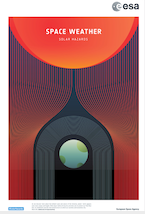Speaker
Description
In the frame of the Space Weather Service segment of the SSA (Space Situational Awareness) programme ESA (European Space Agency) requested an operational space weather prediction system with appropriate databases originating from near-real time service provider instruments in order to provide space weather related services. Since the space weather environment of the Earth is highly influenced by several physical parameters and mainly due to the complexity of the magnetosphere, a very good spatial and time resolution is required in space weather monitoring. MTA Centre for Energy Research has developed a dedicated space weather monitoring instrument concept (called D3S-RADMAG) that can be provided as a market product combining both, radiation and magnetic field measurement capability, into a single instrument which is compatible with the needs of ESA’s D3S measurement requirements. The conceptual approach shall take into account modularity as design driver in order to make it possible to accommodate the instrument on different platforms as a hosted payload. Modularity means that a general, core electrical system is designed (digital processing and power supply), which can handle the sensor systems that are needed for specific application or flight opportunities. The following sensors can be added to the instrument core system in accordance with the given hosting mission possibilities: radiation measurement telescopes to measure electrons, protons and heavy ions, miniaturized dose rate monitors to measure radiation effect accumulated dose at critical units, and a magnetometer sensor with a third party boom system to host the magnetometer sensor outside of the spacecraft. This concept provides a more versatile instrument, which can be fit to the given hosted mission measurement requirements by appropriate sensor system selection. In addition the instrument concept features radiation alarm support in-orbit for the hosting spacecraft making the instrument much more attractive for the possible platform providers. The presentation will provide a brief overview about the status of the instrument development.

